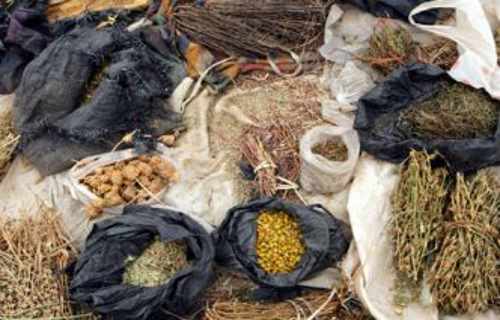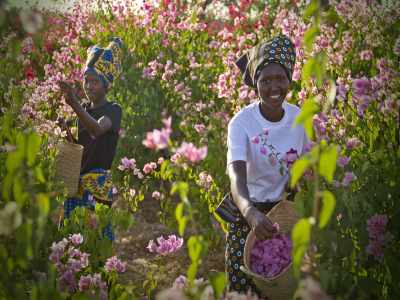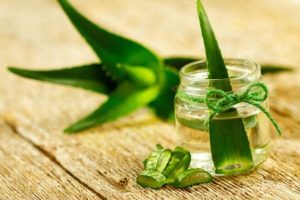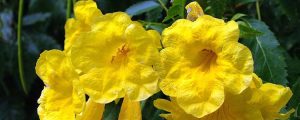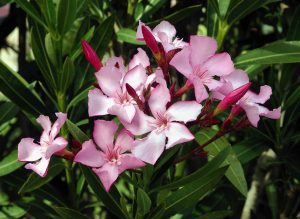Scientists have confirmed more than 20 local plant species are effective against many of the top killer cancers today. During a three-day annual scientific conference of Kenya Medical Research Institute (Kemri), more than 30 researchers left no doubt that the country has immense capacity to deal with cancer from its plant resources.
The scientists from various local universities collaborating with Kemri described how they hunted down, studied and confirmed in laboratories that plant extracts hold effective treatments to even the most deadly cancers.
The evidence presented at the KASH conference in Nairobi in February left no doubt that every Kenyan dying of cancer lives near or next to a possible cancer treatment or cure.
Between the researchers, 16 projects were presented involving about 20 plants, some including pearl millet and the sijambok pod.
Most of the plants the scientists reported are widely used locally for medicinal purposes and many specifically for treating cancer.
“Over 60 per cent of currently used anti-cancer agents are derived from natural sources,” explained Sabina Wangui Wachira of Centre for Traditional Medicine and Drug Research at Kemri.
“Our work was to provide scientific evidence to support claims that some Kenya medicinal plants are active against cancer.”
Wachira, in the work also involving Jomo Kenyatta University of Agriculture and Technology, investigated the effectiveness of three local plants against cancers.
These included the well-known red stinkwood (Prunus africana), which has been exploited internationally for the treatment of prostate cancer.
However, this time around they were testing the effectiveness of the tree’s bark against breast cancer, a major killer of women in Kenya.
“We found extracts from the bark highly effective against breast cancer cell lines, explaining why many communities use it as a medicine,” she told the conference.
She told of their drawback in trials with the local confetti and the pepper-wood trees, the latter known as Mkaa in Kiswahili.
The two trees, the researchers reported had shown little activity against breast cancer but were very effective against the cell lines of colon cancer.
Crispus M Ngule of the same department at Kemri told of their experiments with tamarind fruit (Mkwanju) and pearl millet. They tested extracts from these plants against prostate, cervical and breast cancers and found them to be highly effective.
“Our findings are a scientific justification on the probable use of pearl millet and tamarind fruits in the treatment and management of cancer.”
For the three days, such heart-warming stories were told more than a dozen times, explaining how different plant species and parts had passed crucial laboratory tests on their effectiveness in stopping the proliferation of cancerous cells.
For the three days, such heart-warming stories were told more than a dozen times, explaining how different plant species and parts had passed crucial laboratory tests on their effectiveness in stopping the proliferation of cancerous cells.
A combination of the highly popular and already domesticated Moringa oleifera or drumstick with leaf extracts of the African Indigo called Sargellat by the Marakwet of the Rift Valley had also been investigated
IMPRESSIVE ARSENAL
Researcher Jecinta Wanjiru Ndungu of Rongo University said the two trees were seen to stop the proliferation of cervical, breast and prostate cancer cell lines in the laboratory.
Even when tested against the drug Tamoxifen, for breast cancer, the local herbs were found to stand their ground well.
This was not the first time Kenyan researchers were presenting evidence that local plants have provable ability to treat cancer.
But it was definitely the first time Kenya’s premier research institute had brought under one roof such an impressive arsenal against the deadly killer.
“We are happy scientists are now confirming what we have always known and practised. It is then time to convert the knowledge into products and service,” said Dr Shadrack Moimett of Koibatek Herbal Clinic in Eldoret.
Such an assurance though, was conspicuously lacking from the Kemri conference. With no exception, all presenters recommended further research in their work before any drugs can be developed.
“Further studies are recommended to isolate the bioactive compounds from the crude extracts and determine their mechanisms of action against cancerous cells,” said Regina Mwangangi of Kenyatta University.
Mwangangi had presented victories against breast cancer from the extracts of the much known black wattle tree and the bitter leaf vegetable plant called Lisabakhwa by the Luhya.
But this prescribed route to product development, Dr Moimett and other experts say, could be painfully long and prohibitively expensive, a cost that would be reflected in the final product.
Julius Wanjohi Mwangi, lecturer and director of Intellectual Property Rights at University of Nairobi, estimates that it takes ten to 17 years and between $200 million (Sh20 billion) to over $2 billion (Sh200 billion) to develop a new conventional drug.
Mwangi, a professor of Pharmacognosy (the study of medicine derived from natural sources), broke new ground two years ago when he presented the first public defence of herbal medicine at the University of Nairobi.
Mwangi and a team from the university had collected data at a herbal medicine clinic in Nakuru for five years.
During the period, about 55,000 people had been treated at the clinic. Some 6,000 of the patients had gone to the clinic with heart conditions while another 2,000 had cancer.
In his presentation, Mwangi demonstrated that herbal medicines actually work against many diseases, including cancer.
Mwangi, Moimett and other like-minded experts are suggesting that Kenya goes the Chinese way to quickly develop safe and affordable natural health products.
“We could learn from the Chinese, who are doing a lot of clinical and other scientific work on their herbal medicines while concurrently using them in their hospitals,” said Mwangi.
Luckily for thousands of Kenyans waiting for science-backed herbal cancer treatments., things are finally looking up.
The Health Bill 2016, now in its final stages in Parliament suggests the formation of a legal body to oversee the management of alternative medicine in Kenya.
Such a body will set standards for all herbal products and, importantly, formulate policies to facilitate the referral of patients between herbalists and conventional hospitals.
Further, the Government’s proposed Traditional Herbal Medicine and Medicinal Plants Bill 2014, if and when it becomes law. could be a game changer because it allows for Kenya to go the Chinese way with herbal medicines.
But while experts, bureaucrats and politicians argue on which way to go, Kenyans suffering from cancer are hardly waiting.
A recent study revealed that among 115 cancer children at Moi Teaching and Referral Hospital, Eldoret, 95 per cent had been given by their parents complementary medicines such as herbs.
A 2011 World Bank survey estimated there are 40,000 herbalists in Kenya compared to about 4,500 doctors. (source)
After a long battle with lung cancer, former Tv personality and presenter Janet Kanini Ikua has passed on. Her health challenges began in 2015 when she was diagnosed with deep vein thrombosis (DVT) and later lung cancer. She was flown to India for treatment as Kenyans back home organized the one nation for Janet concert that saw millions raised for her medical bills. Her death comes as a shock to many, as doctors in February this year declared her cancer free.
Natural Cancer Cures… These Herbs Are Super Powerful Cancer Killers!
Ginger: A new study has just found that a chemical in ginger is up to 10,000 times more effective at killing cancer cells than chemotherapy! The study, published in the PLoS journal, found that the chemical 6-shogaol kills cancer stem cells but leaves healthy cells alone. Ginger is also instrumental in boosting the immune system and for healthy gut bacteria. Both of these are absolutely crucial for cancer recovery. So be sure to grate up some fresh ginger (one full teaspoon) and make yourself a nice warm ginger tea to drink morning, noon and night, along with using it in your foods as much as you can!
Aloe Vera: This herb has been used successfully for decades as a natural cancer cure and treatment. It contains substances called polysaccharides, which boost the immune system and kill rogue cancer cells. You can easily grow aloe vera in your garden and add it to a delicious tropical smoothly every day. It also works very well rubbed on as a topical ointment for cancers (especially skin cancers).
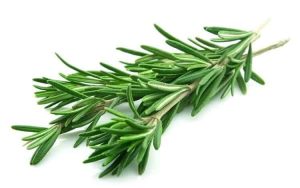
Rosemary: Rosemary contains two amazing chemicals known as camosic acid and carnosol. These substances are not only extremely potent cancer cures, they also protect against the deadly effects of radiation exposure. (And as an added benefit, rosemary is extremely good for brain health too!). Use it in your cooking as much as possible or make yourself a delicious rosemary and lemon tea every day.
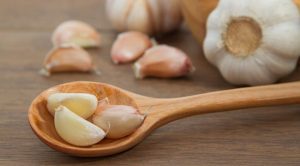
Garlic: Garlic is one of nature’s excellent “cure all” remedies. And as far as cancer is concerned, studies have shown that it’s definitely one of the strongest natural cures for cancer available. The sulphur compounds in garlic are known to neutralize carcinogens and contribute toward tumor shrinkage.
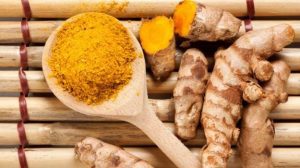
Turmeric: Turmeric is another very effective natural cure for cancer. It contains a compound called curcumin, a super potent tumor destroyer. Curcumin also boosts the immune system tremendously, which further benefits cancer sufferers. Folks, this is one herb you simply cannot go without if you have cancer (and you cannot have too much of it either). You need to take at least 2-4 heaped teaspoons a day in divided doses. To get this, mix it in a smoothy or with whatever you need to to get the required dosage. And also use it in your cooking as much as you can.
In addition, always take 10-12 small black peppercorns with your turmeric as black pepper increases the absorbability of turmeric by a massive 2000%!
Red Clover: The flowers from this herb actually contain four anti-tumor compounds. The antioxidant in red clover, tocopherol, is one of the strongest there is.
Astragalus: The astragalus herb is also one of the most powerful natural cancer treatments available. Studies by the University of Texas showed that cancer patients given astragalus had twice the survival rate as those given a placebo. It seems to work with virtually every type of cancer. In fact, astragalus is so good the FDA in America is currently in the process of granting its approval as an official anti-cancer agent!
Cat’s Claw: This herb is a vine from the Peruvian jungle and has been used for thousands of years as a cure all medicine and cancer treatment. It contains substances called pentcyclic oxindole alkaloids (POA’s) which have been shown to boost the immune system, prevent and treat certain cancers, and possibly even treat AIDS. Cat’s clawworks so well for cancer patients because it makes the body produce more T-cells (T-cells attack and kill cancer cells). When you are looking to buy this herb, keep in mind that the most potent part of the plant is the root.
Oleander: The oleander plant (not actually a herb) is a tremendous natural remedy and treatment for cancer, but it does need to be used with caution. This plant is poisonous in high doses, but at the right dose, and in the right formula, it really is one of the all-time best natural cures for cancer. The best way (and the safest way) to take the oleander plant is in supplement form. We recommend you click on this cancertutor link and read the information it contains first before deciding on using the oleander protocol.
Cannabis Oil (Hemp Oil): Yes, cannabis oil is not actually a herb either, but this is the best place to discuss this miracle cancer cure. It’s probably unlikely that you haven’t already heard of hemp oil being used to treat and cure cancer. It’s a very heated and controversial subject at the moment, only because cannabis is considered “illegal” in most countries (but this is beginning to change very quickly). However, the therapeutic benefits of cannabis oil is not controversial. Even the National Cancer Institute now recognizes that cannabis oil actually treats cancer!
Cannabis oil is a whole subject in itself, but the fact is, the benefits of hemp oil, especially for treating and even curing cancer, are now considered to be “overwhelming”. This really is the “real deal” as far as natural cures for cancer go.
We recommend you first watch the full version of “Run From the Cure” by well-known hemp oil advocate Rick Simpson, so you fully understand the power of cannabis oil and it’s incredible ability to treat all forms of cancers. You can view it here…
Old-time gardeners were ahead of their time! Their ideas for wildflower gardens, children’s gardens, organic pest controls, decorating with houseplants, healing with herbs, and more are at the forefront of modern gardening trends. Take a look back to the future of gardening with this incredible collection of gardening advice from successful 17th-, 18th-, 19th-, and early 20th-century gardeners.
Early gardeners knew what they were doing–they had to, since they depended on their plants for food, medicine, home decorations, and recreation! Whether you’re growing vegetables, flowers, herbs, fruits, trees, shrubs, wildflowers, houseplants, or lawn grass, these old-time tips will help you get the most out of your plantings. Do you want a lusher lawn? How about more beautiful flowerbeds or hints for making your yard look bigger? You’ll find all that and more in Old Time Wisdom.
Old-Time Wisdom” boxes present early gardeners’ best planting notions.
* Tried-and-true recipes from early kitchens will tickle your tastebuds.
* “Strange but True” boxes reveal weird, wacky, and wonderful gardening techniques.
* A source list makes it easy to locate wonderful old-time plants.
* Authentic old-time illustrations take you back to a time when garden tips were on everyone’s lips.
* A “Recommended Reading” list guides you to more great ideas from the past.
Books can be your best pre-collapse investment.
Carnivore’s Bible (is a wellknown meat processor providing custom meat processing services locally andacross the state of Montana and more. Whether your needs are for domestic meator wild game meat processing)
The Lost Book of Remedies PDF ( contains a series of medicinal andherbal recipes to make home made remedies from medicinal plants and herbs.Chromic diseases and maladies can be overcome by taking the remediesoutlined in this book. The writer claims that his grandfather was taughtherbalism and healing whilst in active service during world war twoand that he has treated many soldiers with his home made cures. )
Easy Cellar(Info about building and managing your root cellar, plus printable plans. The book on building and using root cellars – The Complete Root Cellar Book.)
The Lost Ways (Learn the long forgotten secrets that helped our forefathers survive famines,wars,economic crisis and anything else life threw at them)
LOST WAYS 2 ( Wordof the day: Prepare! And do it the old fashion way, like our fore-fathers did it and succeed longbefore us,because what lies ahead of us will require all the help we can get. Watch this video and learn the 3 skills that ensured our ancestors survival in hard times offamine and war.)

